Grand Canyon National Park recently announced that the park will be temporarily closing to overnight hotel stays starting on December...

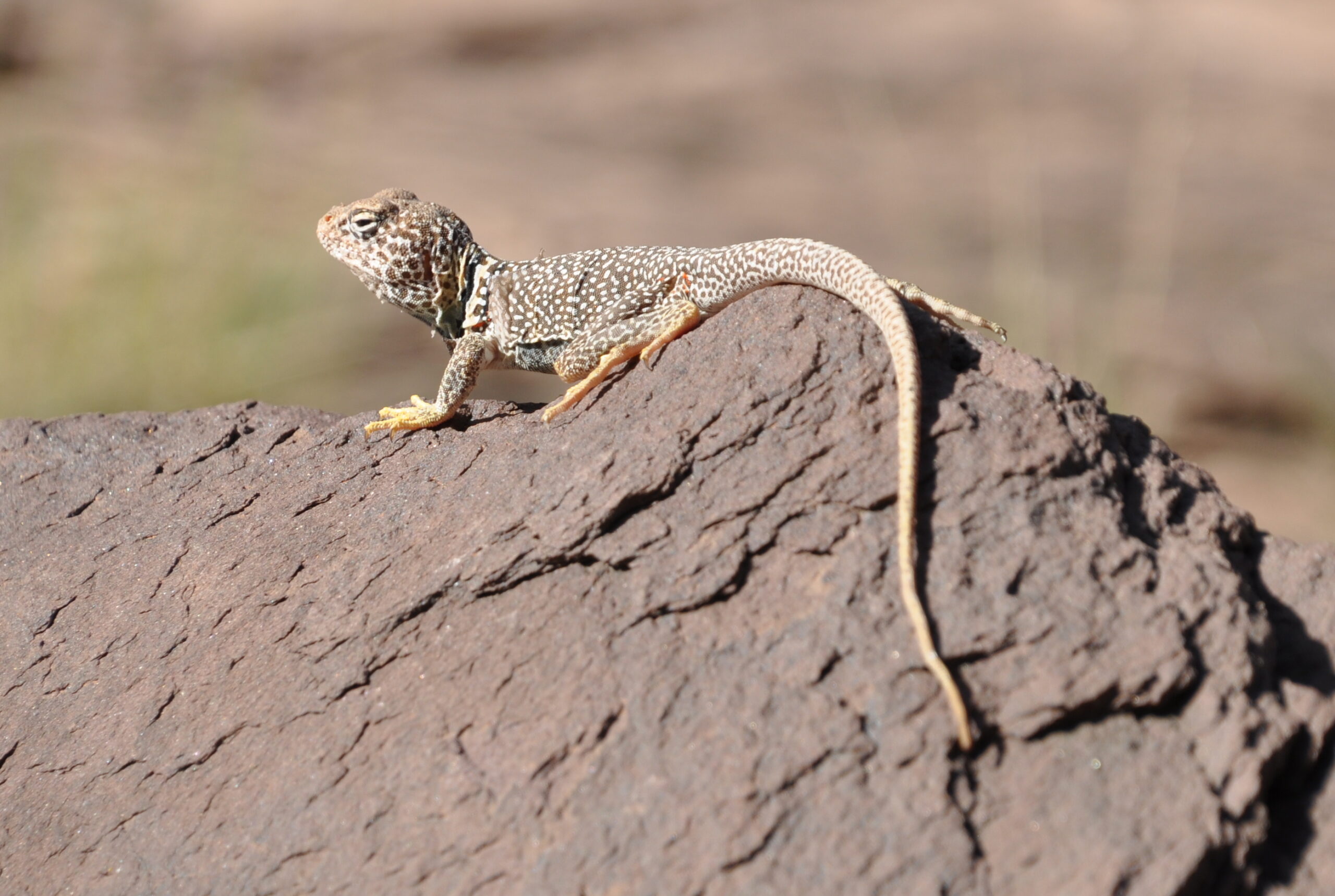
If you’ve ever been anywhere in the Southwest, chances are you’ve seen a lizard. These little reptiles have become nearly synonymous with the desert landscapes of the region. Walk into a gift shop in Arizona and you’ll find lizards on everything—t-shirts, keychains, pottery, you name it.
Growing up, I’d see lizards everywhere in the summer. I used to watch them dart around, doing their strange little push-up motion, and I’d try to catch them—usually without success. They were always way faster than I was. Over time, I stopped paying much attention to them because they were so common. But recently, I’ve found myself watching them again, and that childlike curiosity I once had has come rushing back. So, I thought I’d write about these creatures that remind me so much of my childhood in the Southwest.
The Grand Canyon—with its sandy beaches, rocky slopes, cliff walls, and warm summer sun—makes the perfect habitat for many lizard species. If you’re planning a visit, chances are you’ll spot quite a few. Let’s talk about some that you might see.
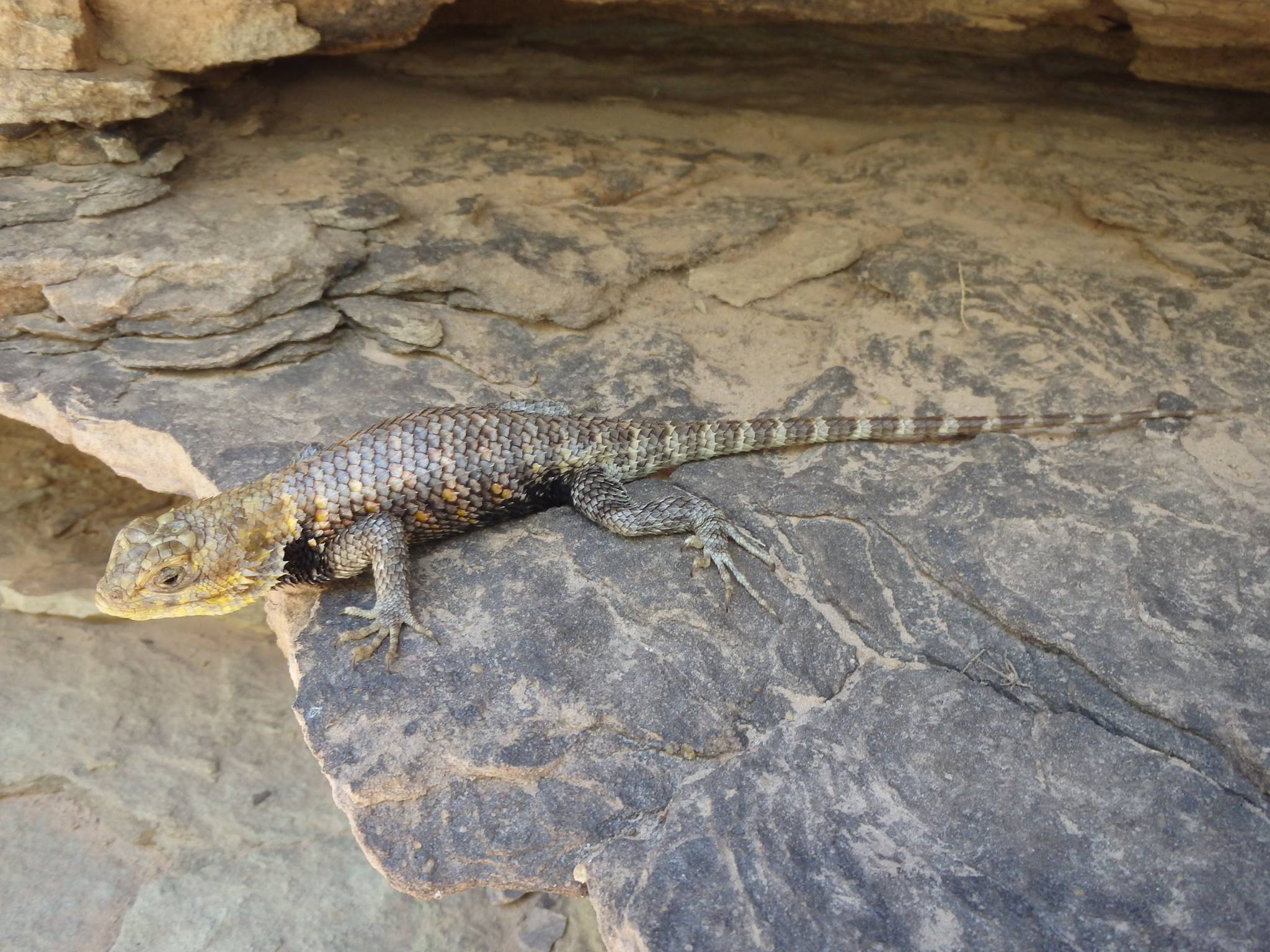
Spiny lizards are among the most common lizards you’ll encounter in the Grand Canyon. They have sharp, pointed scales that overlap like spiky armor, giving them a tough, rugged appearance. Usually dark tan with yellow-orange accents along their sides, they can grow up to 12 inches long—though much of that length is tail. These lizards look muscular compared to others, and males have a striking blue patch under their necks and on their bellies.
They love sunny, rocky areas where they can lounge and wait for their dinner to appear. Their diet includes beetles, ants, grasshoppers, and other bugs. Occasionally, they’ll snack on smaller lizards or ripe berries.
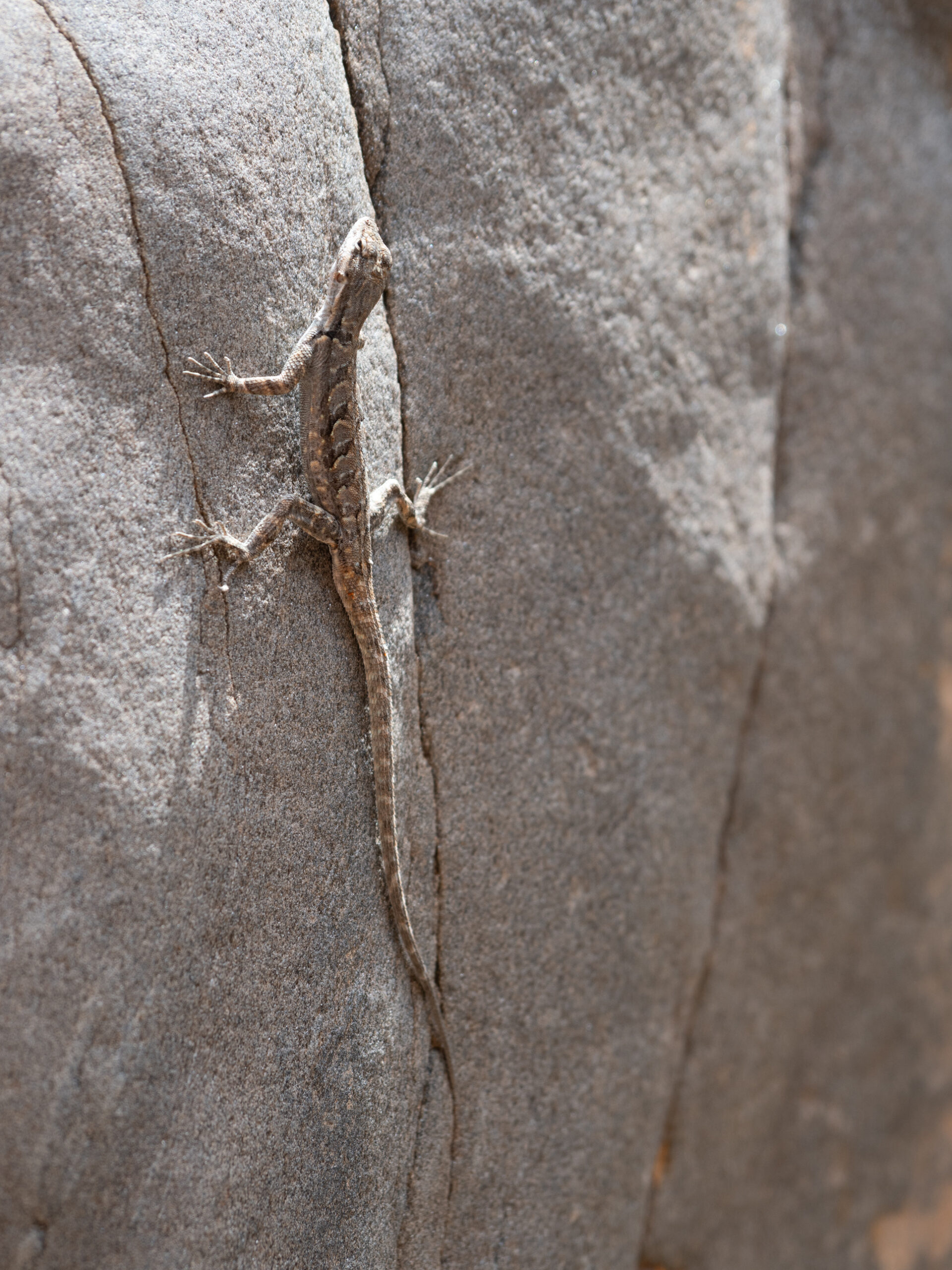
Tree lizards are quick, lanky, and agile. They’re usually brown with black markings on their backs and range from 3 to 6 inches in length. Like spiny lizards, they feed on insects, but they especially love to climb. You’ll often see them darting up cliff walls or hiding among the canyon’s vegetation.
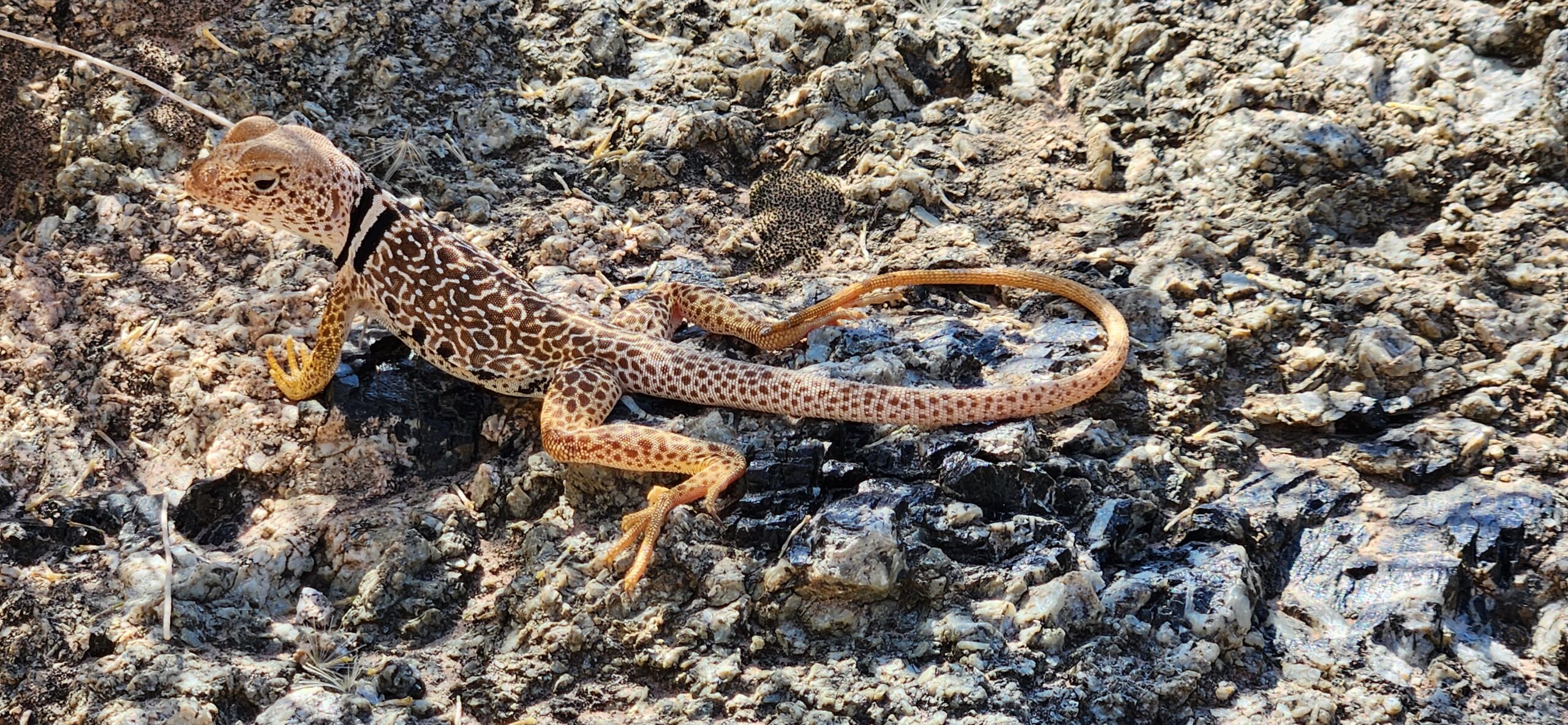
This might be my favorite lizard to spot. Eastern collared lizards are named for the black-and-white “collar” around their necks. Males often sport bright green scales with yellow on their heads, while females tend to be more muted in color—mostly brown with just a touch of green.
They prefer rocky slopes and crevices and can grow over a foot long (again, much of that is tail). Their diet includes insects, smaller lizards, and anything else they can catch. One of the most entertaining things about collared lizards is how they run: when startled, they become bipedal and dash off on their hind legs at speeds of up to 15 mph. It’s hilarious and fascinating to watch.
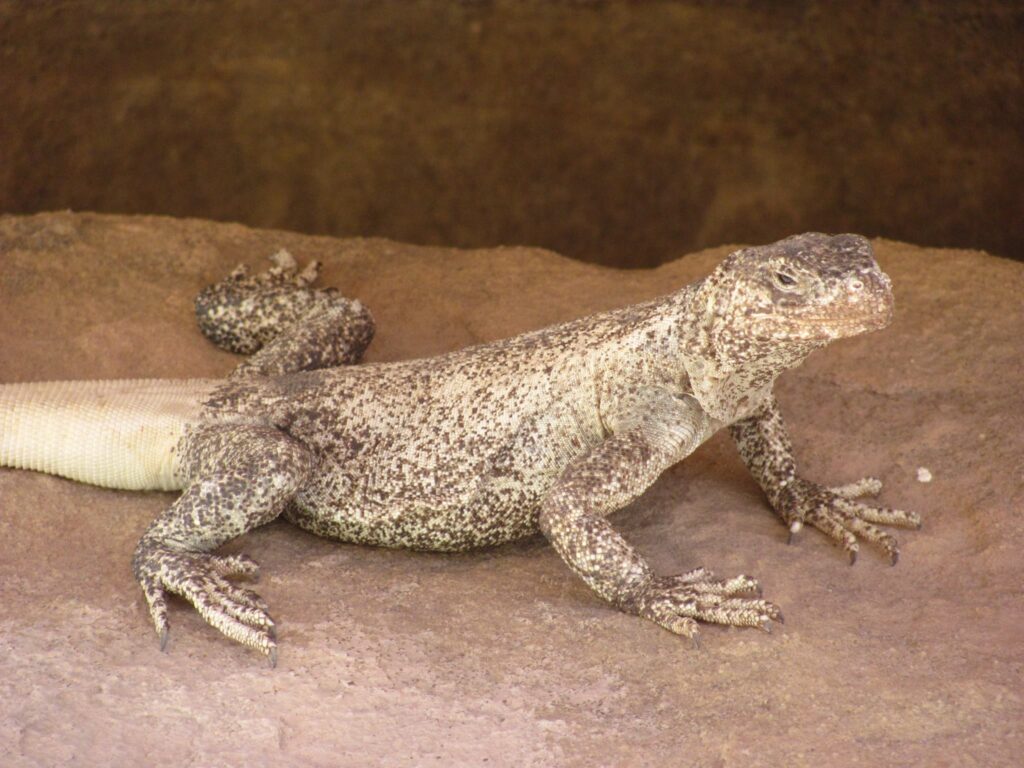
As fun to see as they are to say, chuckwallas are one of the largest lizards in the Grand Canyon—and also the most laid-back. These flat-bodied, chubby-looking lizards can grow over 20 inches long. Their thick, long tails help them prop up while they munch on their favorite foods: plants! That’s right—chuckwallas are herbivores. They enjoy flowers, shrubs, and berries found throughout the canyon. Chuckwallas can live up to 15 years in the wild! Though it’s not as common to see these guys as a lot of the other lizards, you can’t miss them when they make an appearance
Whether you’re a longtime desert dweller or a first-time visitor, watching these lizards can be a surprisingly joyful experience. For me, they’re not just desert wildlife—they’re a nostalgic reminder of childhood summers spent on and off the river.
Check out some of our other animal blogs:
5 Common birds you might see in the Grand Canyon
If you’re rafting when there are monsoons in Grand Canyon, you might experience something incredible Imagine this: It’s your second day in the canyon and you are overwhelmed by how monumentally tall the walls around you seem to have gotten in such a short time. In the...
Bugs in Grand Canyon! With Halloween at the end of the week, it will be hard to go anywhere without being inundated by pumpkins, spider webs, costumes, and candy. In the spirit of the season, we thought you might like to know a bit about some of the more...
Grand Canyon Q&A: A Conversation with 7th Graders This past week, I got a call from our office asking if I’d be willing to talk to some seventh graders about the Grand Canyon. It was definitely an unusual request for me, but of course I said yes. When I...